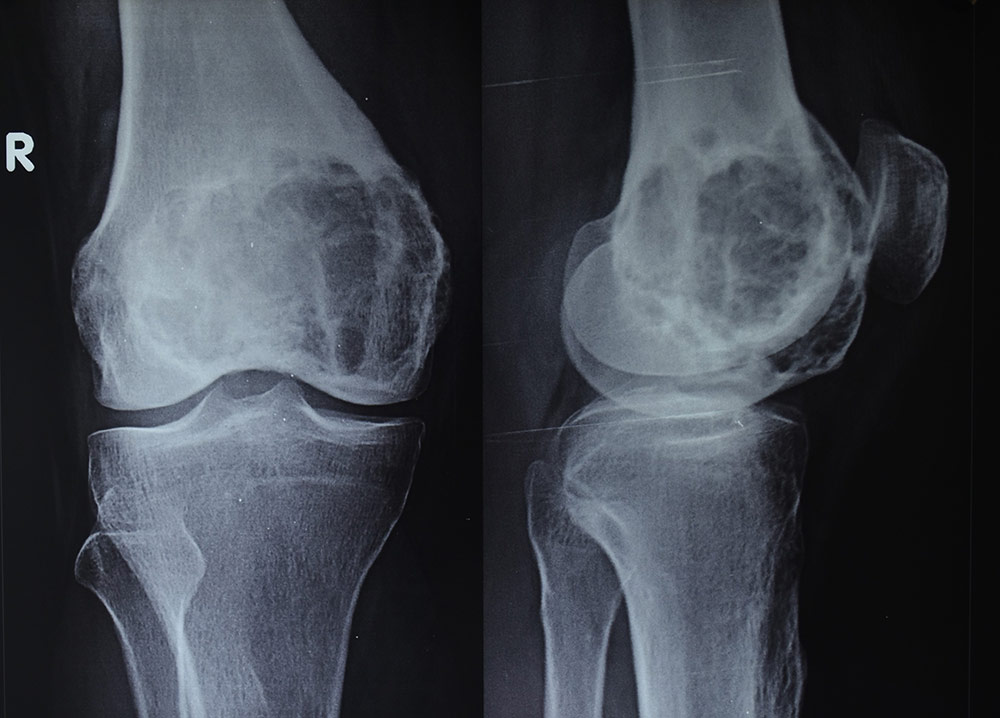What is Chondroblastoma?
Chondroblastoma is a rare, benign (non cancerous) cartilaginous bone tumour of adolescents and young adults which typically occurs at end of long bones. It is more common in males and most commonly occurs in 2nd decade of life. It accounts for only 1-2% of benign bone tumours.
Is Chondroblastoma a cancer?
Chondroblastoma is a benign, non- cancerous tumour.
What are symptoms of chondroblastoma?
Pain in the involved bone is the most common symptom which gradually increases with time. Patient may initially attribute the pain to a trivial sports related trauma. It usually affects bones around the knee and hip joint.
How is Chondroblastoma diagnosed?
Patient is subjected to imaging studies in the form of X-rays and MRI to look for the local extent of lesion. Biopsy is gold standard for diagnosis of chondroblastoma.
What is biopsy? Who should do the biopsy?
In biopsy, some part of tumour tissue is removed and sent for examination under microscope. It can be open biopsy (in which a surgical incision is made to expose the tumorous bone and take out the diseased tissue) or a needle biopsy (in which a thin needle is used to take out the tissue without any incision). Since needle biopsy doesn’t involve any incision, the surgical trauma, pain and morbidity are lesser with needle biopsy.
One must also understand that needle biopsy is not synonymous with FNAC though both are done with a needle. FNAC has no role in the diagnosis of Chondroblastoma.
Since the location and technical aspects of biopsy can affect the treatment options and final outcome of the patient, biopsy should always be done by Orthopaedic Oncologist (specialist who treats bone and soft tissue tumours) or one of his team members.
We at Bone Cancer Clinic, Chandigarh do biopsy with a needle for almost all the cases.
How is Chondroblastoma treated?
Chondroblastoma treatment in India usually requires surgery in the form of Extended curettage, in which the tumorous tissue is scooped out and the cavity so formed after removal of tumour tissue is filled either with bone graft or cement.
However, smaller lesions can be managed with radiofrequency ablation(RFA). This is a minimally invasive procedure which does not require any incision or hospitalisation. In RFA, the probe is placed inside the tumour and the tumour tissue is destroyed with the heat generated by the probe.
What are risk factors for chondroblastoma?
There are no known hereditary or environmental factors in chondroblastoma.
Dr Rajat Gupta
Orthopaedic Oncologist
Bone Cancer Clinic
# 5, Sector 19 A, Chandigarh
https://goo.gl/maps/KT5hkxsRVy12
SCO 141 (Backside), Sector 14, Panchkula
https://goo.gl/maps/aLdmMwMqvMumVXe76

